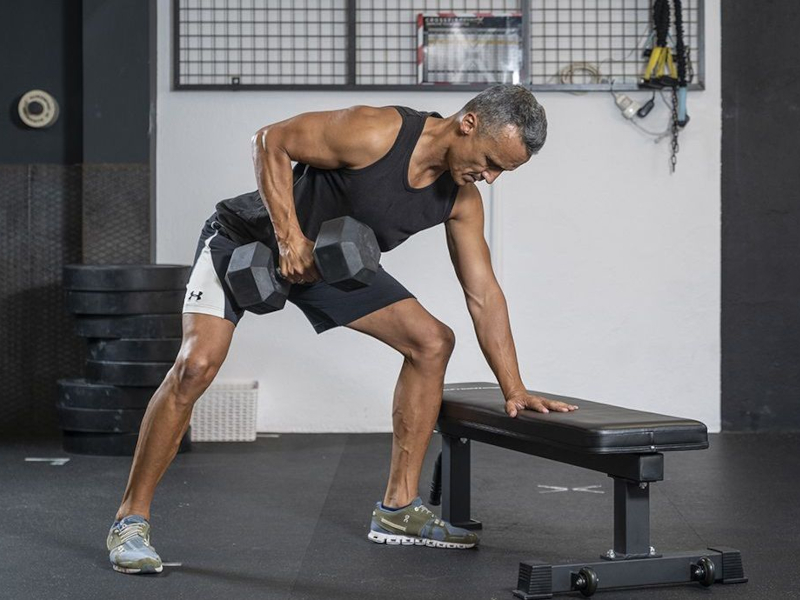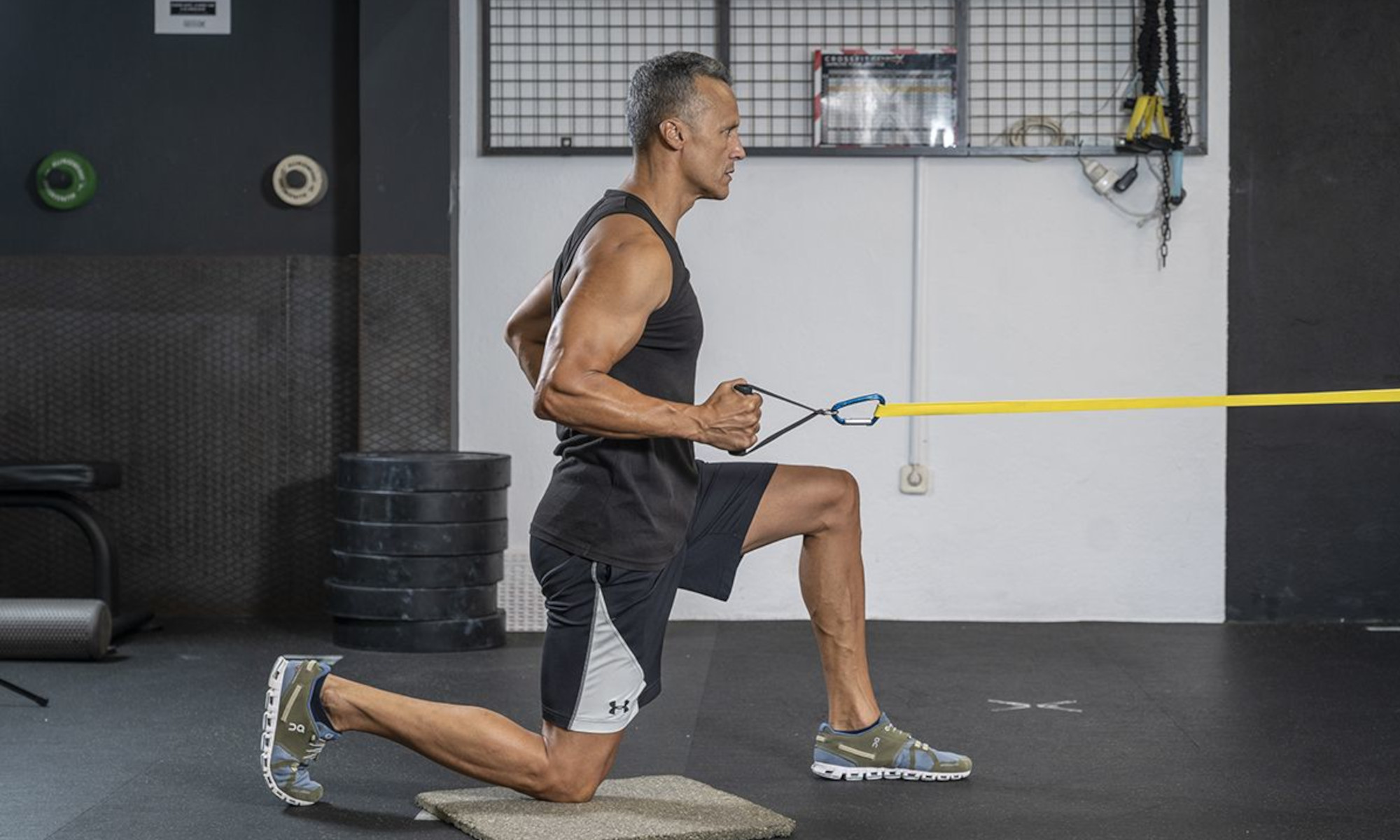Gua Completa: Remo Horizontal Con Barra - Tcnica Y Beneficios
Is the horizontal barbell row the unsung hero of back exercises? Mastering this seemingly simple movement can unlock significant gains in strength, muscle development, and overall athletic performance.
The horizontal barbell row, often overshadowed by flashier exercises, is a cornerstone movement for building a strong, functional back. To initiate the exercise, assume a standing position with your knees slightly bent, hinging at the hips to create an incline with your torso. This angle, crucial for proper execution, is a defining factor in the exercise's effectiveness.
Proper form is paramount in the horizontal row, ensuring that you target the intended muscle groups. A well-executed row provides the assurance that you're effectively working the muscles you aim to develop. The horizontal barbell row, requiring an overhand grip, is a prime example of this. Today, we'll delve into every facet of this exercise, equipping you with the knowledge to perform it flawlessly. Stay with us as we unravel the intricacies of this essential movement.
So, how is the horizontal barbell row executed? While often associated with bodybuilding, the horizontal row is also a foundational exercise in calisthenics. Yet, many fail to grasp the key elements vital for optimal execution. Rowing exercises in calisthenics, especially those using bodyweight, are remarkably effective at strengthening the back and improving strength. Variations range from beginner-friendly options, with feet planted on the ground, to more advanced forms that utilize full bodyweight without foot support.
A horizontal pulling exercise involves moving weight horizontally towards your torso from a position away from it (e.g., rowing). The most common examples of horizontal pulling movements include chest pulls (with a lat machine). Remember to secure the bands properly when exercising. Rowing machines engage multiple muscle groups simultaneously, representing a comprehensive approach to fitness. Complete your physical training routines with the rowing machines available at sportfitness.
The horizontal row is an excellent choice for targeting various muscle groups across your body. This exercise is ideal for fortifying the muscles of your back, shoulders, arms, and legs. Moreover, it's an outstanding option if you are seeking an exercise to...
Research indicates that horizontal rows activate the latissimus dorsi muscles (lats) and place greater emphasis on the trapezius. It has also been found that seated rowing is better for activating the lats. Horizontal pulling exercises, like rows in all their variations, with a full range of motion. Shoulder extension exercises focus on the stretching portion of the latissimus dorsi and the contraction towards the hip and navel region. This means that horizontal rowing patterns can be trained intensely, at relatively high intensities, and almost daily. Therefore, the horizontal rowing pattern should be a priority for developing healthy shoulders in the long term.
Here are 13 horizontal row variations that you can incorporate into your training regime.
The horizontal row allows the shoulder to move in external rotation and prioritizes safe training volume in the horizontal plane. The back and shoulders are designed to serve as primary stabilizers of the dynamic action that occurs in pressing or pushing movements. The one-arm dumbbell row is a variation of the inclined row; however, it's not recommended for beginners. If you still lack sufficient confidence in your technique, it can be risky for the cervical spine and the spine. Furthermore, horizontal rows contribute to improved cardiovascular endurance and coordination, simultaneously promoting correct posture. Including horizontal rows in your training will enhance strength, endurance, and flexibility, leading to better athletic performance and a reduced likelihood of injuries.
This beginner's guide will teach you how to perform the dumbbell horizontal row, whether in the gym or at home. The horizontal row is a very interesting pulling exercise within calisthenics. However, it is an exercise that is often undervalued. In this article, I want to discuss the great exercise called the Australian pull-up or inverted row, bodyweight row, horizontal pull-ups, or Australian row. This exercise is more important than many calisthenics practitioners believe. The one-arm dumbbell horizontal row is an exercise with a fairly simple execution technique that can bring numerous benefits for gaining volume in the back, shoulders, and arms. A flat bench and a dumbbell are needed to perform it. The barbell row includes countless variations, which you should know as a beginner in the training world. This way, you will not only be able to include its conventional execution but also have more alternatives when designing your routine.
You will need access to a low pulley machine with a V-grip or a bar with a neutral grip. Select the appropriate weight on the machine. Horizontal rows are a fundamental tool for strengthening the body in an integral way, as they involve various muscle groups simultaneously. By using this equipment in your exercise routine, you will be working both the upper and lower parts of the body, allowing for complete and effective training. The advantage of this exercise is that it allows you to develop the musculature of the back and other areas of your body. The muscles worked with this one-arm dumbbell horizontal row are:
- Teres major
- Latissimus dorsi
- Posterior deltoid head
- Trapezius
- Rhomboids
- Biceps brachii
- Long supinator and anterior brachialis
Deadlifts, face pulls, lumbar hyperextensions... Stay with us and discover what all this sounds like Chinese torture, but it will make you lose those love handles that bother you so much. It is important that you stay until the end because we are going to teach you everything you need to tone your back by training from home with the minimum.
Key Considerations for the Horizontal Barbell Row
Proper Form: The foundation of any effective exercise lies in correct form. For the horizontal barbell row, this means maintaining a flat back throughout the entire movement, ensuring the core is engaged, and pulling the weight towards your lower chest or upper abdomen. Avoid rounding your back, as this can place undue stress on the spine.
Grip and Hand Placement: A pronated (overhand) grip is typically used for the horizontal barbell row. The width of your grip can vary depending on your goals and anatomy. A wider grip may emphasize the involvement of the trapezius and rear deltoids, while a narrower grip can target the lats more directly. Experiment to find what feels most comfortable and effective for you.
Elbow Position: The position of your elbows influences which muscles are emphasized. Keeping your elbows tucked in towards your body will better engage the lats. Flaring your elbows out will bring the rear deltoids and trapezius more into play.
Progressive Overload: To see continuous progress, its essential to gradually increase the weight, repetitions, or sets over time. This principle of progressive overload is crucial for muscle growth and strength gains. Record your workouts and track your progress to ensure you're consistently challenging yourself.
Variations: Don't be afraid to incorporate different variations of the horizontal barbell row to target different muscle groups and prevent plateaus. Here are a few examples:
- Inverted Rows: This bodyweight exercise is a great way to start building back strength. Using a bar set at a comfortable height, lie beneath it, grip the bar with an overhand grip, and pull your chest towards the bar.
- Dumbbell Rows: Using dumbbells allows you to work each side of your back independently, which can help correct muscle imbalances.
- T-Bar Rows: This variation allows for a greater range of motion and can be very effective for targeting the mid-back muscles.
Benefits of the Horizontal Barbell Row
Muscle Development: The horizontal barbell row is a compound exercise that effectively works multiple muscle groups, including the lats, trapezius, rhomboids, rear deltoids, biceps, and forearms. This comprehensive muscle engagement contributes to overall back development and upper body strength.
Improved Posture: Strengthening the muscles of your upper back helps to counteract the effects of poor posture, such as slouching. A strong back helps pull your shoulders back and down, promoting a more upright and confident posture.
Enhanced Athletic Performance: A strong back is essential for many athletic movements, including pulling, lifting, and throwing. The horizontal barbell row can help improve your performance in various sports and activities.
Injury Prevention: Strengthening the back muscles can help stabilize the spine and reduce the risk of back pain and injuries. A strong back is better equipped to handle the stresses of daily activities and exercise.
Integrating the Horizontal Barbell Row into Your Routine
Warm-up: Before performing the horizontal barbell row, warm up your muscles with dynamic stretches and light cardio. This will prepare your muscles for the workout and reduce the risk of injury.
Programming: Typically, the horizontal barbell row can be incorporated into a back-focused workout. Aim for 3-4 sets of 8-12 repetitions, adjusting the weight to match your strength level. Ensure that you're maintaining proper form throughout the exercise. Rest for 60-90 seconds between sets.
Listen to Your Body: Pay attention to your body and don't push yourself too hard, especially when starting. If you experience any pain, stop the exercise and consult a healthcare professional.
By diligently practicing the horizontal barbell row, youre investing in a stronger, more resilient physique. Embrace this exercise, and watch your back and your overall fitness flourish.
Safety and Considerations
Back Pain: If you have a history of back pain, it is important to approach the horizontal barbell row with caution. Start with lighter weights and focus on maintaining proper form. Consider consulting with a physical therapist or a qualified trainer to ensure the exercise is appropriate for your condition.
Pre-existing Shoulder Conditions: Individuals with pre-existing shoulder conditions, such as rotator cuff tears or impingement syndrome, may need to modify the exercise or avoid it altogether. Always consult with a healthcare professional before starting any new exercise program if you have a pre-existing shoulder condition.
Form Over Weight: Prioritize proper form over lifting heavy weights. Its far more beneficial to lift lighter weights with excellent form than to lift heavy weights with poor form. Poor form increases the risk of injury and can diminish the effectiveness of the exercise.


